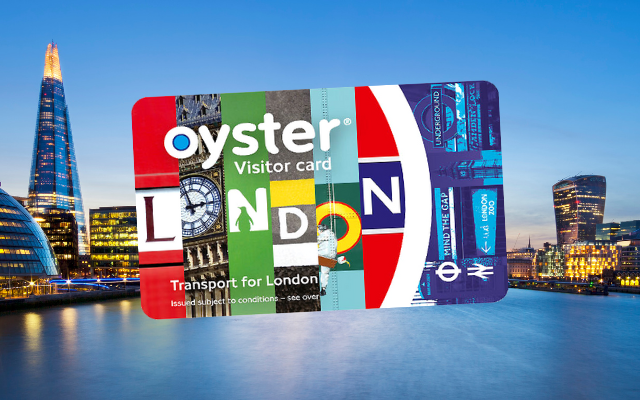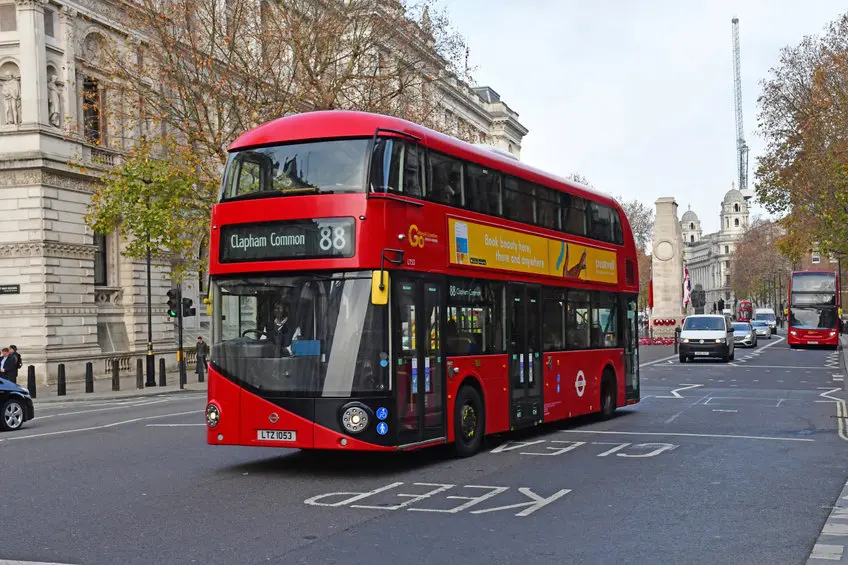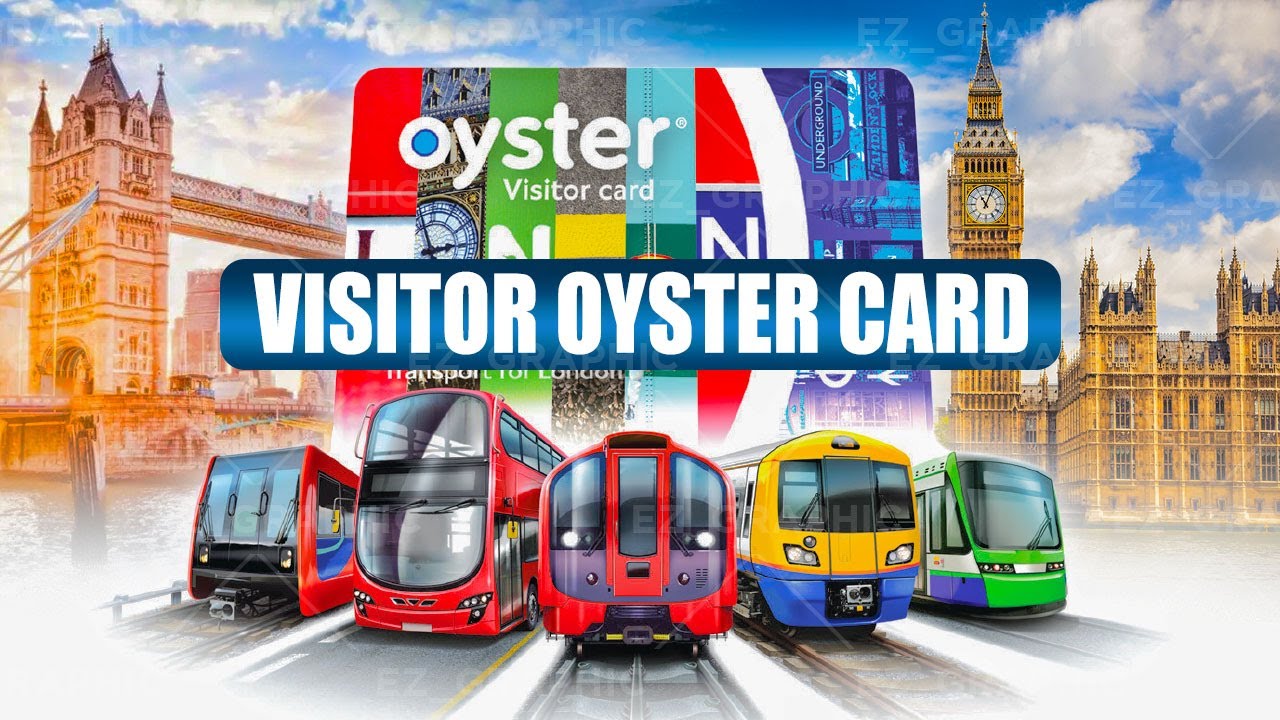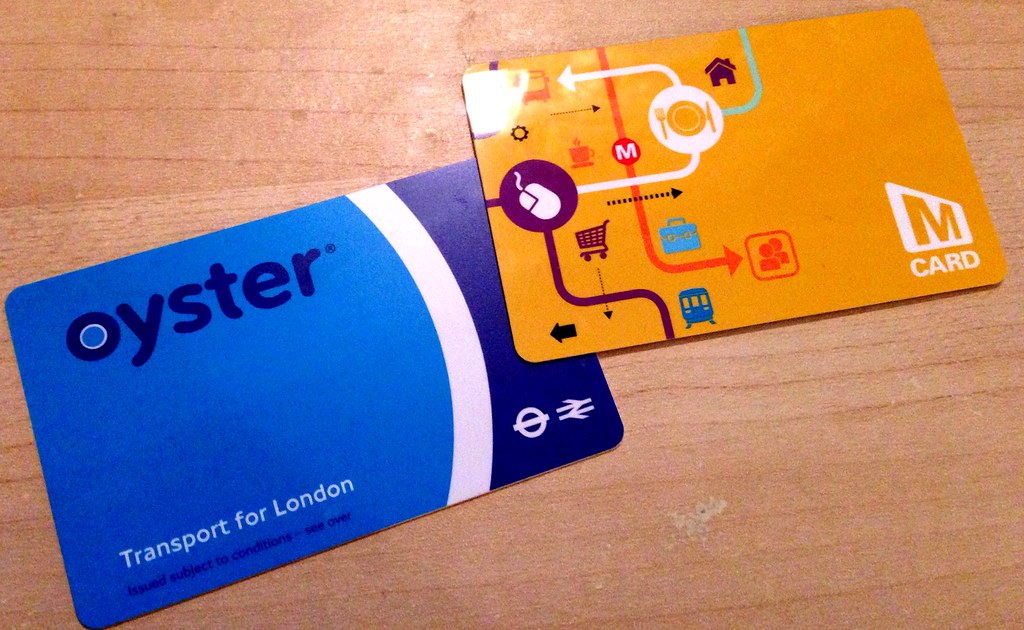London Pass Vs Oyster Card - Travel Solutions For Tourists
Need a London travel pass? Learn how the London Pass and Oyster Card differ in pricing, convenience, and value to make the best choice for your trip.
Dec 08, 2024799 Shares88.7K Views

London is one of the most vibrant and dynamic cities in the world, attracting millions of visitors each year. Whether you're visiting for a few days or a couple of weeks, navigating the city’s extensive public transportation network can be a daunting task.
With a range of travel pass options, from the iconic Oyster card to the newest Contactless payment cards, making the right choice for your trip can significantly impact your experience.
Understanding London’s Transport System
Before we dive into the specifics of each pass, it's essential to understand how London's public transport system operates.
London's transport network is vast, including the London Underground, local buses, Docklands Light Railway (DLR), and even some river services. Travel costs are based on the zones you travel through, with Zone 1 being the heart of Central London and zones expanding outwards.
The pricing structure is designed to reward frequent travelers with a daily price cap, which limits the maximum amount you’ll pay for transport in one day.
1. The Oyster Card: London's Iconic Travel Pass
Overview
The Oyster card is the most commonly used travel pass by both London residents and tourists. It operates on a Pay As You Go (PAYG) system, meaning you load credit onto the card and use it to tap in and out of various transport services.
Where It Works:
- London Underground (Tube)
- Local buses
- DLR, London Overground, and TfL Rail
- Some river services
- Heathrow Express
Pricing & Benefits
Oyster cards are the most economical choice for most visitors. The daily fare is capped, so once you've hit the daily limit, you can travel for free for the rest of the day.
| Type of Journey | Cost (Single) Daily Price Cap |
| London Underground (within Zones 1-2) | £2.80 £7.40 |
| Bus/Tram (Any Zone) | £1.65 £4.95 |
| Zone 1-4 Travel | £3.30 £8.50 |
Advantages:
- Low initial cost: Oyster cards themselves cost £5, which is refundable if you return the card.
- Daily price caps: Once you hit the cap, additional travel is free.
- Discounts: You can add a 7-day Travelcard to your Oyster, offering unlimited travel in your selected zones.
Considerations:
- Requires a refundable deposit (£7) for standard Oyster cards.
- You’ll need to load the card with enough credit before you travel.
- Not the best option for those only staying for a very short visit (less than 3 days).
2. The Visitor Oyster Card: Ideal For Tourists
Overview
The Visitor Oyster card is designed specifically for tourists and provides the same benefits as the standard Oyster card, with a few additional perks.
Where It Works:
- London Underground
- Local buses
- DLR, London Overground, and TfL Rail
- Some river services
Pricing & Benefits
Visitor Oyster cards have the same fares as the regular Oyster card, but they come with added benefits, such as discounts on major London attractions, restaurants, and shops.
| Type of Journey | Cost (Single) Daily Price Cap |
| London Underground (within Zones 1-2) | £2.80 £7.40 |
| Bus/Tram (Any Zone) | £1.65 £4.95 |
Advantages:
- Added discounts: Access to a variety of discounts and special offers on popular London attractions.
- Easy online purchase: You can buy it online and have it delivered to your home before you travel.
- Convenience: No need to worry about topping up the card; it’s ready to use when you arrive.
Considerations:
- Activation fee: The Visitor Oyster card has a non-refundable £5 activation fee.
- No Travelcards: You cannot load a 7-day Travelcard onto a Visitor Oyster card.
- Non-refundable deposit: Unlike the standard Oyster, you cannot get your activation fee back.
3. Travelcard: Unlimited Travel Passes
Overview
A Travelcard is another popular option, especially for those who will be in London for an extended period. Unlike the Oyster or Visitor Oyster card, a Travelcard allows unlimited travelwithin the specified zones for the duration of the pass.
Where It Works:
- London Underground
- Local buses
- DLR, London Overground, and TfL Rail
- Heathrow and Gatwick Airport Rail
Pricing & Benefits
You can purchase 1-day, 7-day, and monthly Travelcards, with unlimited travel within selected zones. If you plan to travel frequently in London for several days, this might be the most cost-effective option.
| Duration | Zones 1-2 Price Zones 1-4 Price |
| 1 Day Anytime | £13.50 £17.60 |
| 7 Days Anytime | £38.00 £45.60 |
| 1 Month Anytime | £147.80 £179.50 |
Advantages:
- Unlimited travel: No need to worry about topping up your card for the duration of your pass.
- Convenience: Ideal for those who plan to visit many attractions or travel frequently within the city.
- Best value for long stays: More economical than PAYG on Oyster for stays of 5 days or more.
Related: London Weather In November 2024
Considerations:
- Higher upfront cost: Travelcards can be more expensive for short stays compared to Oyster or Contactless.
- No daily caps: Unlike Oyster, there are no price caps, so it might be less economical for short trips.
- Non-transferable: Travelcards are linked to your name and photo (for longer durations).
4. Contactless Payment Cards: The Newest Option
Overview
Contactless payment cards are the newest method of paying for travel in London. These are regular debit or credit cards that are equipped with contactless payment technology, meaning you can simply tap in and out of stations without needing a dedicated travel pass.
Where It Works:
- London Underground
- Local buses
- DLR, London Overground, and TfL Rail
- Some river services
Pricing & Benefits
The pricing structure for Contactless payments is nearly identical to the Oyster card. You’ll pay as you go, with daily price caps limiting your expenditure.
Advantages:
- No upfront cost: No need to purchase a card or load it with credit.
- Simple: Just use your existing debit or credit card.
- No activation fee: Unlike Visitor Oyster cards, Contactless cards do not have any activation fees.
Considerations:
- International cards: Some overseas bank cards may charge a foreign transaction fee.
- Limited discount offers: No additional discounts at London attractions or stores like the Visitor Oyster card.
Key Takeaways
Best Option For Short Visits (1-3 Days):
Visitor Oyster card: If you’re staying for just a few days, the Visitor Oyster card offers convenience, and discounts on attractions, and can be purchased in advance for a seamless experience.
YouTube Video

Oyster Card vs Travelcard Price Comparison, Transport for London
Best For Longer Stays (4+ Days):
Travelcard: If you plan to stay in London for more than a few days and intend to use public transport frequently, the Travelcard offers unlimited travel in a range of zones, with the best value for stays of 7 days or longer.
Best For Flexibility:
Oyster cardandContactless cards: Both offer great flexibility for travelers who want to pay as they go and don’t want the hassle of a fixed-duration pass.
FAQ's About London Pass Vs. Oyster Card
Can I Use A Contactless Payment Card?
Yes, you can use a contactless payment card (debit/credit) to pay for travel in the same way as an Oyster card. Just tap in and out, and the system will apply daily or weekly caps.
What’s The Best Option For A Short Visit?
For short stays (1-3 days), a Visitor Oyster card is often the best choice. It’s convenient, offers discounts, and can be pre-ordered before you travel. Contactless paymentcards also work well if you prefer flexibility.
Is There A Daily Cap On Travel Costs?
Yes, Oyster cards, Visitor Oyster cards, and Contactless cards all have daily fare caps. Once you reach the cap, any additional travel is free for the day.
Can I Get A Refund For My Oyster Card?
You can get a refund for your remaining balance at any ticket machine, though the Visitor Oyster card activation fee is non-refundable.
Is A Travelcard Better Than An Oyster Card?
A Travelcard is ideal for extensive travel, offering unlimited journeys within specific zones. For shorter visits, an Oyster card is usually cheaper due to daily caps and pay-as-you-go pricing.
Conclusion
Choosing the best travel pass in London depends on your trip’s duration, your travel habits, and whether you prefer paying upfront or tapping as you go. From the flexibility of Contactless payment cards to the convenience of Visitor Oyster cards and the unlimited travel offered by Travelcards, each option offers unique benefits tailored to different needs.
Jump to
Understanding London’s Transport System
1. The Oyster Card: London's Iconic Travel Pass
2. The Visitor Oyster Card: Ideal For Tourists
3. Travelcard: Unlimited Travel Passes
4. Contactless Payment Cards: The Newest Option
Key Takeaways
Best For Longer Stays (4+ Days):
FAQ's About London Pass Vs. Oyster Card
Conclusion
Latest Articles
Popular Articles



